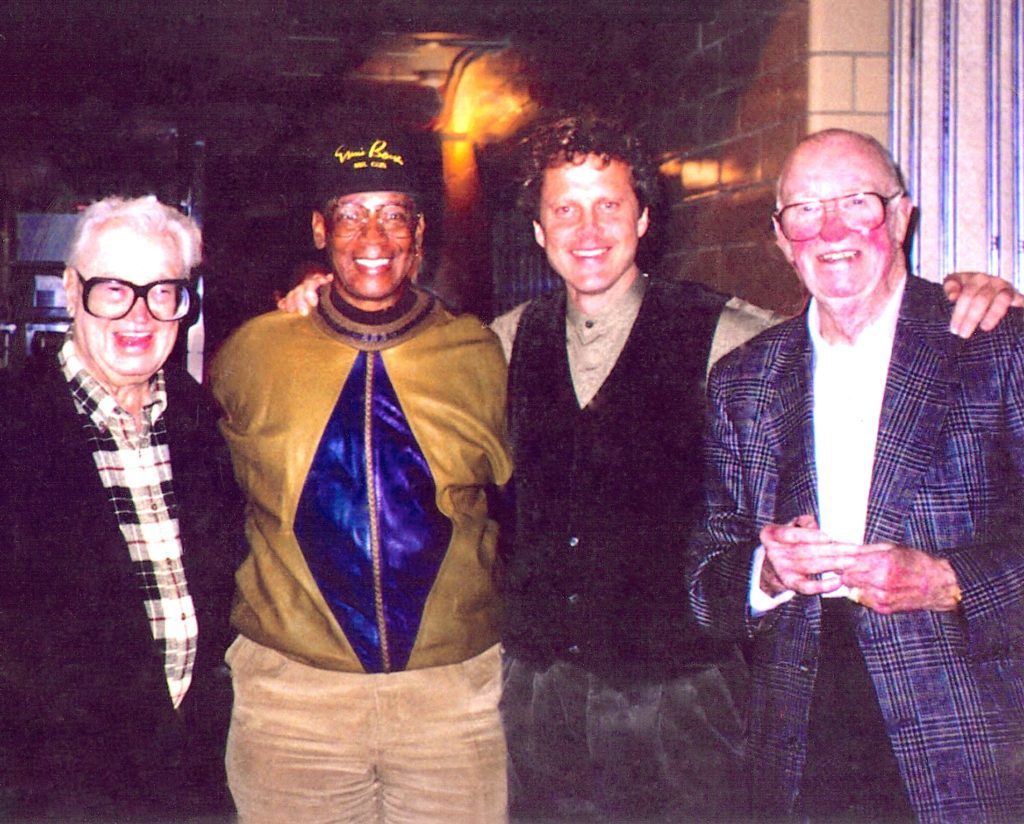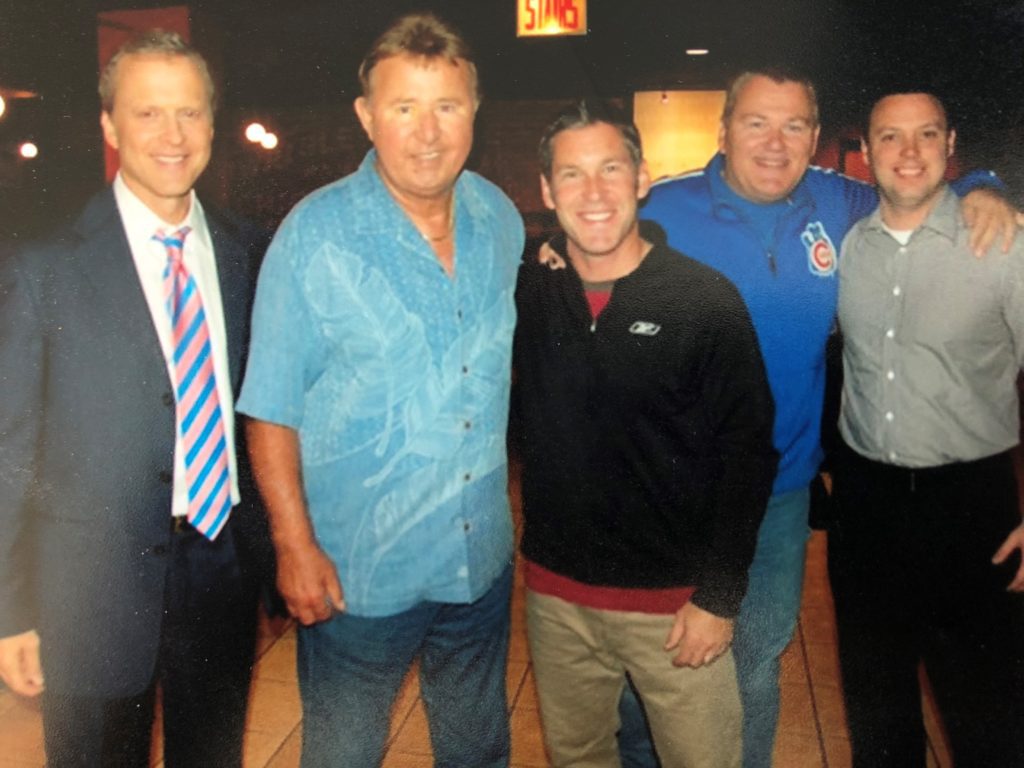Marquee Q&A: Bob Sirott on the opportunity to interview Cubs legends

Marquee Sports Network recently announced a new series of “Icons of the Ivy” episodes, centered around a number of previously recorded interviews with Cubs legends including Ernie Banks, Ron Santo, and more. The Cubs commissioned the interviews across 2010 and 2011 as a way to preserve the stories of some of the greatest players in franchise history. Selected to facilitate the conversations was long-time Chicago media personality, Bob Sirott.
Now a host of WGN Radio’s morning drive from 6-10 a.m., Sirott sat down with Marquee Sports Network to discuss his memories of these interviews, his lifelong passion for the Cubs and what makes these players’ stories resonate nearly half a century after their playing days ended.
Marquee: Thanks for taking the time, Bob. Take us back to 2010 and how you got involved with these initial interviews.
Bob Sirott: Well I got a call from (Cubs President of Business Operations) Crane Kenney, and Crane said to me he was looking to put down some interviews, and that he was looking to capture the human-interest angle with these players. He said that Cubs fans, baseball fanatics, will want to hear from these guys and that we definitely want to cover what happened on the field, but we want the off-the-field angle, the story behind the story, that we want to appeal to all people with these stories. He said that’s why he would want me to do it, because of my interest in sports, but that’s not all I do on TV and radio. Of course, what I didn’t tell him was that I would have paid to do these.
As a kid going to Wrigley Field, we would sit in the grandstands and then at the end of the game, we would wait around until the grounds crew would give each kid a row and say if you step on the cups in this entire row, we’ll give you a ticket to tomorrow’s game because stepping on the cups would make it easier for the crew to clean it up. So, in some cases we could go to a whole homestand, we would pay for one game and then clean up after the games and get tickets to the rest. Needless to say, I was thrilled with Crane’s offer to conduct these conversations. And thankfully we did this first batch when we did as now Banks is gone, and Santo is gone, and [Glenn] Beckert is gone. So, I’m really glad we got those guys, and now we have a list of people that we’re going to get in addition to that first group of guys.
M: You mention going to games as a kid, what are your first memories of the Cubs and how has the fandom shaped your life?
B: In a way, the Cubs influenced my career path. As a kid, I think my dad took me to my first game when I was probably eight or nine years old, and like millions of others when I walked up the stairs for the first time and that green cathedral opened up in front of me in color, I was hooked. Back in those days, Jack Brickhouse on television was my after-school baby sitter, and on radio the play-by-play announcer was Jack Quinlan. I would learn later that Jack was one of the all-time great talents, but as a kid though there was just something about him I loved. I loved his voice, I loved his sense of humor, and in those days when west coast games weren’t televised I would, like a lot of other kids, put the transistor radio under the pillow. And so that’s what I wanted to be, I wanted to be the Cubs announcer, and so that’s what gave me the broadcasting bug. Eventually I realized to do that day in, day out, wouldn’t be as easy as I thought and maybe I wouldn’t be as good as Jack Quinlan was, and I got interested in some other areas of broadcasting … but it all really started when I got the bug from the Cubs play-by-play radio guy.
M: You’ve had a number of different roles in your media career, but not always on the sports side necessarily. In what roles were you able to cover the Cubs?
B: Well, it’s interesting, I was never the sportscaster, per se, but I was very fortunate along the way where my TV and radio jobs were not strictly read the script and read the news. They all afforded me an opportunity to show my personality and do more than just read a script. So, people who grew up watching me on TV or listening on radio have always heard me talk about the Cubs, they know I’m a Cubs fan. I’ve always made that part of whatever I did. For example, when I was playing rock and roll on the radio in the afternoon, frequently in the morning I’d go to Wrigley Field and hang out at batting practice and record interviews with the players. Sometimes we’d do some little bits that hopefully were funny, and I incorporated that into my show.
M: What did it mean to you to have this opportunity to interview these Cubs legends?
B: It was quite a thrill, to be able to anchor what will be a permanent source for generations of Cubs fans. You know, I’m the voice of the coal mine over at the Museum of Science and Industry, and I always kiddingly said well it doesn’t get any better than that. Well, this is even better than that (laughs). I was thinking about this the other day that these are more conversations than interviews and you get these great stories. Baseball is all about stories and baseball is all about sharing memories, and linking generations. When you think about the uniqueness of baseball, it’s the only sport where those stories all begin with the same thing. They all begin with who took you to the game or who you took to the game and then you get to “… and I saw Kerry Wood strike everybody out.” But, it always starts with how you got there and who you were with.
M: What is it about these players that resonates so strongly still today?
B: It’s interesting because they might not all be Hall of Famers, but they are all icons. They are the guys, who along with the ballpark, built this tradition and I think maybe it’s because of our midwestern nature, or because Chicago is a big city with a small-town feel, or maybe it’s even just because of the intimacy of the ballpark, but they all felt very close to the fans. They really did develop a bond with the fans, just as the fans developed a bond with the players. I remember as a kid if you were sitting in the bleachers, you would be talking with these guys, and they would be talking to you. And then after a while, you’re out there a lot, and they remember you just like you remember them.
Here in Chicago we may not have New York’s Broadway or the movie stars of L.A., so these guys are the celebrities. They mean something to us here that’s unique compared to the rest of the country.
Bob Sirott is the host of a new series of ‘Icons of the Ivy’, a collection of never-before-seen interviews with Cubs legends.
(Courtesy Bob Sirott)




